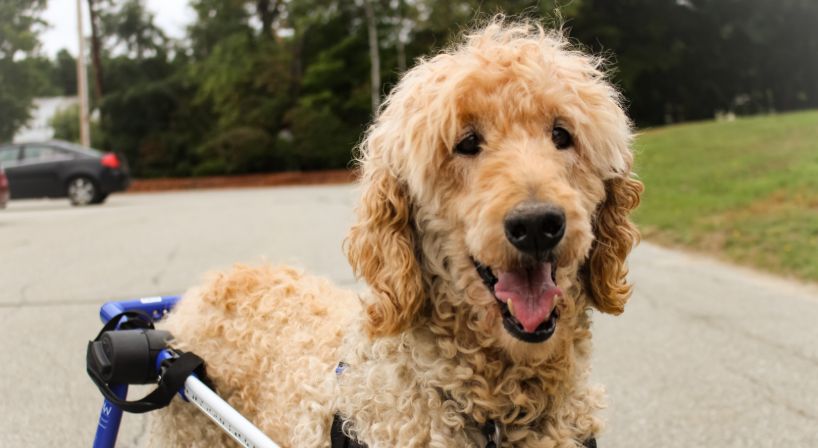Pomeranian Lifespan: How Long Do Pomeranians Live? (Life Expectancy)

10 Best Hypoallergenic Dog Breeds for Allergy Sufferers
Dogs are more than just man's best friend. They're also great for allergy sufferers because some breeds are hypoallergenic dogs. Basically, that means they are the type of dogs that won't shed and drool and cause an allergic reaction. These are the dogs that won't drool and shed, and scratch non-stop when exposed to the environment.
Here are 10 hypoallergenic dogs that you must own:
Chinese Crested

These dogs love the companionship of their masters. What's more, they have little to no hair which makes them hypoallergenic dogs. We all know hair is the main cause of allergies. Hence, remove that and there is no more reason to worry about pet owners having allergies. From the name itself, this breed originated from China.
Maltese

Despite its size, this breed is known as being aggressive towards other dogs that are twice its size. Even if it has long hair, there is no need to worry because it is hypoallergenic. Also, you will probably always visit your dog groomer as these doggies need to be brushed daily.
Miniature Schnauzer

Even if it is small, the miniature schnauzer barks like crazy when it sees a stranger. Hence, it makes for a great watchdog. It has a thick double coat though so that would require clipping all the time but it is still hypoallergenic. It can also adapt to any living environment whether it is the sunny desert or the cold rainforest.
Labradoodle

From the looks of the dog and the name itself, it is obviously a crossbreed between the toy poodle and the Labrador retriever. As for grooming, they need to be taken to the groomer often. As for caring, they basically require the same care with the Poodle, so it is also hypoallergenic like that breed. Despite the official name, they are still widely known as mixed breed dogs.
Bedlington Terrier

Most people would easily mistake this breed for a lamb because of its cool. It may have thick hair but it doesn't need 30 minutes of cardio just to stay fit. All it needs are some warm hugs and a daily walk to the park as it is hypoallergenic.
 American Hairless Terrier
American Hairless Terrier
From the name itself, this breed is completely hairless. Like the Bedlington Terrier, it doesn't need strenuous exercise. It is very popular with kids too as it loves playing with them and it is alright since they are hypoallergenic. It is certainly perfect for those pet owners who like to walk their dog around the city. Unlike other dogs that only need bathing twice a week, this breed needs it regularly. Finally, its nails grow fast so it needs regular nail trimming.
Lagotto Romagnolo
This breed's hair looks a lot like a poodle. The best part about this dog is that it has a ton of energy. Hence, if you're in a playful mood, this dog is great to play with as they're hypoallergenic. Also, they are very loyal to their owners, so you won't catch them playing with other people. When you call their attention, they will respond quickly. You'll need to buy a brush though as it will need regular grooming.
Poodle

Perhaps, the most popular breed among all the aforementioned is the poodle. It may also be the cutest because of how it looks. It also comes in three variations which is miniature, standard and toy and all of them are hypoallergenic. There is no doubt the toy is the cutest, but it still barks loudly despite being pretty small. There is a reason why some of the world's top personalities have poodles. Its delicate coat doesn't shed but requires grooming from an expert.
Soft Coated Wheaten Terrier

This breed needs a lot of exercises daily so better play catch or other games with it. Whether you want it to live in the city or the province, it can easily adapt to that. If you choose to buy a softly coated wheaten terrier, you'll find yourself going to the nearest groomer often as they require regular grooming, still, they don’t shed. Good thing, they're a hit with kids.
Spanish Water Dog

This breed is filled with high octane energy. Therefore, they are best paired with a family that has an active lifestyle. They have a curly coat but the good news is that won't require much attention so that means lesser trips to the dog groomer. In addition, this breed is very hardworking, and they will protect their owners no matter what happens. Finally, don't forget to take them to the groomer once a year to get shaved down.
There is no doubt any of these hypoallergenic dogs would make for a good pet.








